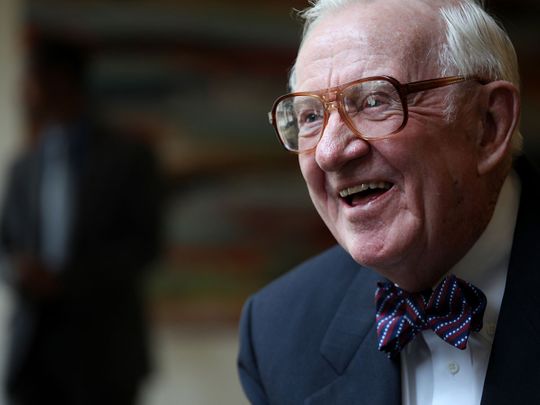
Washington: Former Supreme Court justice John Paul Stevens, a leader of the court's liberal wing who asserted his socially progressive influence on the bench for over three decades, died on Tuesday at age 99.
Stevens, who was appointed by President Gerald Ford in 1975 and served until his retirement in 2010, "died this evening at Holy Cross Hospital in Ft. Lauderdale, Florida, of complications following a stroke," the Supreme Court said in a statement.
"He passed away peacefully with his daughters by his side," the statement said.
Born in 1920 in Chicago as the youngest of four siblings, Stevens first threw himself into the study of literature in the hope of becoming a professor like his mother.
But he turned to law after serving as a naval intelligence officer from 1942 to 1945.
Stevens received such glowing reviews from professors at Northwestern University that he was tapped to clerk for US Supreme Court justice Wiley Rutledge immediately after graduating.
He opened his own law firm in 1951 in Chicago, where he specialised in anti-trust cases.
Stevens was named to the federal appeals court by president Richard Nixon in 1970 after leading a widely-praised investigation into corruption on the Illinois supreme court.
Five years later, then-president Ford became interested in the jurist, whose competence and integrity had been applauded by politicians on both sides of the aisle.
A moderate Republican, Stevens' appointment was approved with a unanimous vote of the Senate.
Progressive pillar
But contrary to Ford's hopes for moderation, Stevens became the court's progressive pillar.
With his white hair, round glasses and bow tie, his goodhearted appearance masked what court watchers have called "crafty decisions" and "ferocious disagreements."
After a few years, he became master of the art of expressing his opposition to the decisions of a court which, as he recalled in a 2007 interview with The New York Times, had become increasingly conservative over the past 40 years.
In his time on the bench, Stevens authored more dissenting opinions than any other justice in the nation's history.
His status as the longest-serving justice on the bench from 1994 until his retirement gave Stevens the power to assign the writing of an opinion when he was in opposition to the chief justice - a strategic position that gave him influence over the court's moderate justices.
A number of his moves have become famous, such as his lengthy challenge to the ultimately successful attempt to halt the recount in the 2000 presidential contest between George W. Bush and Al Gore.
"Although we may never know with complete certainty the identity of the winner of this year's presidential election, the identity of the loser is perfectly clear. It is the nation's confidence in the judge as an impartial guardian of the rule of law," Stevens wrote in a dissenting opinion.
In 2008, while recognising the legality of lethal injection, he notably wrote that "the imposition of the death penalty represents the pointless and needless extinction of life with only marginal contributions to any discernible social or public purposes."












